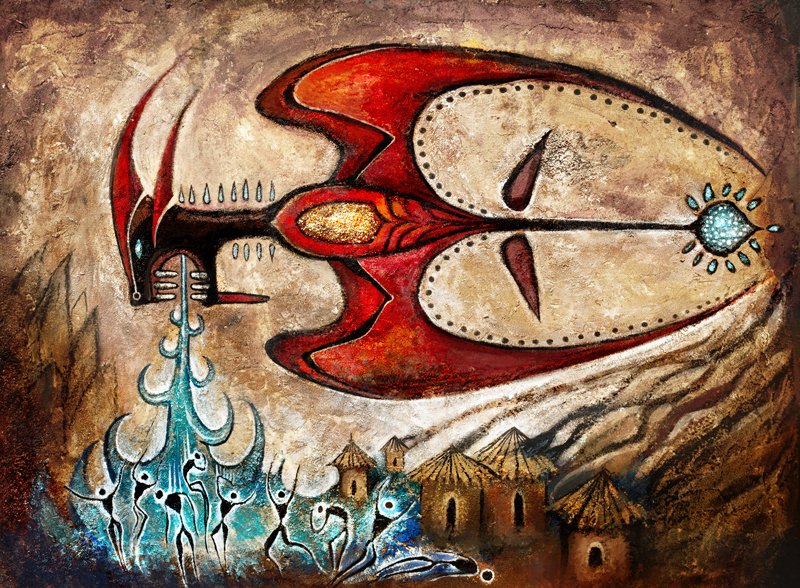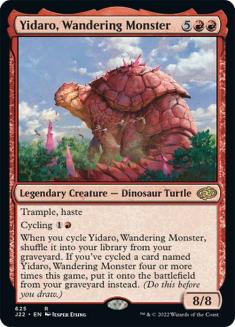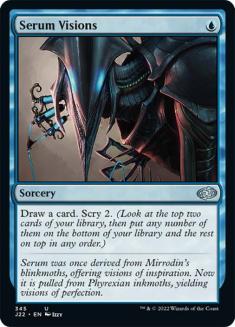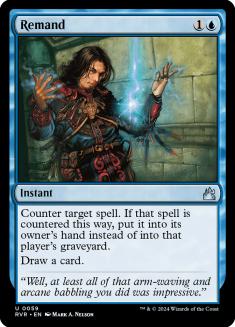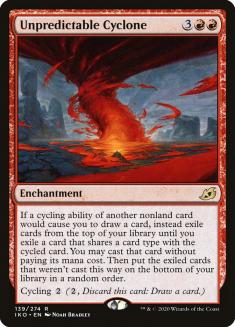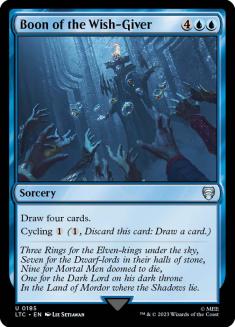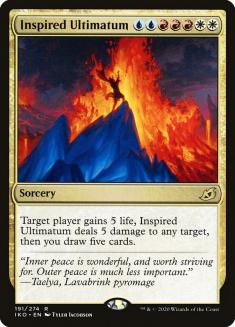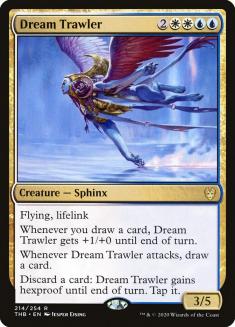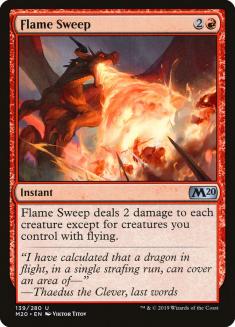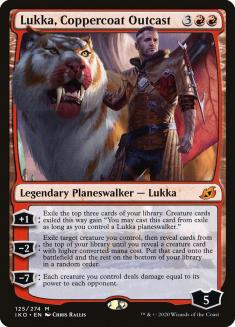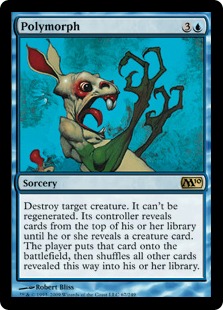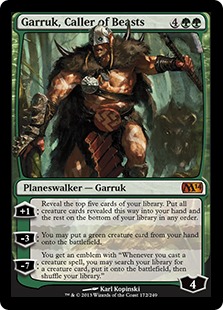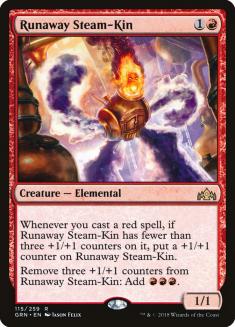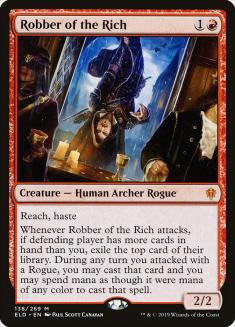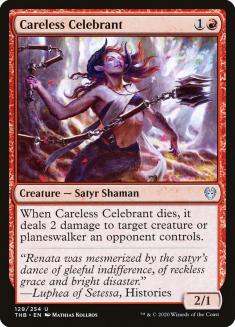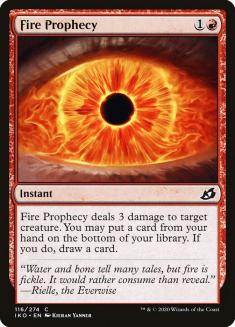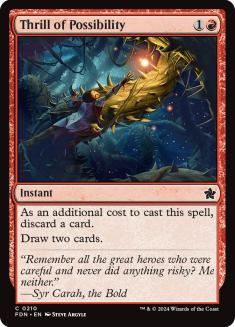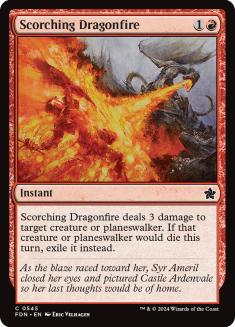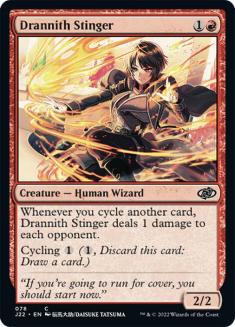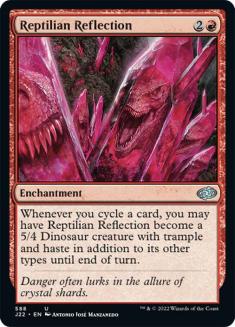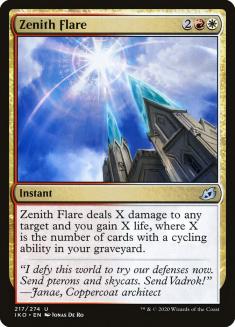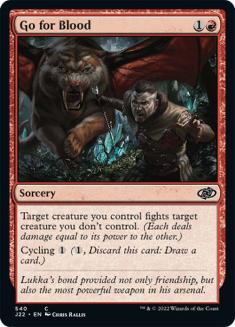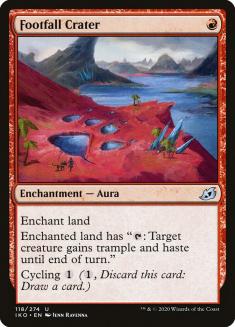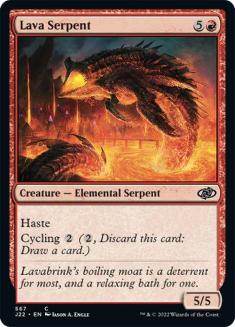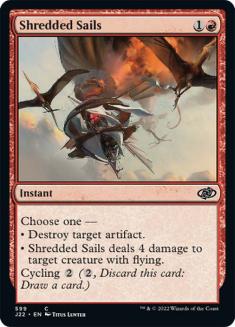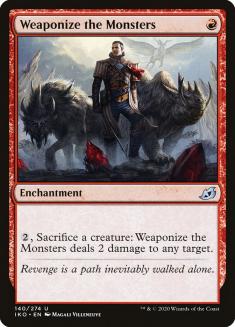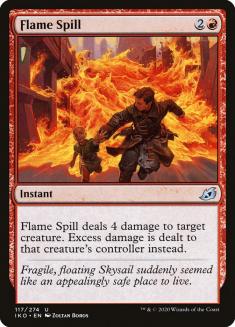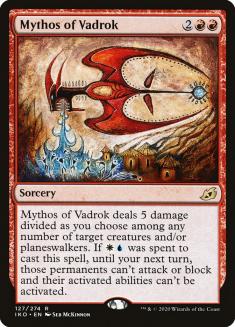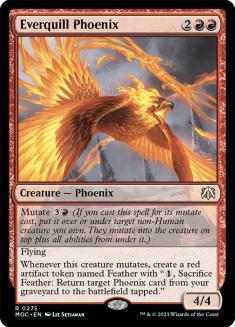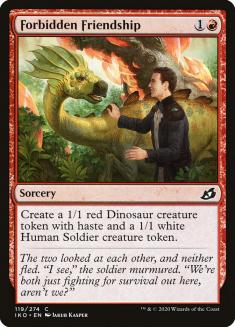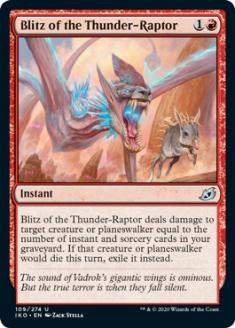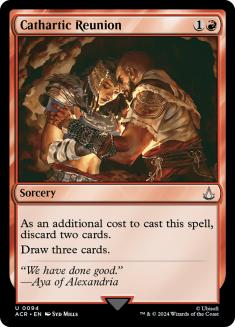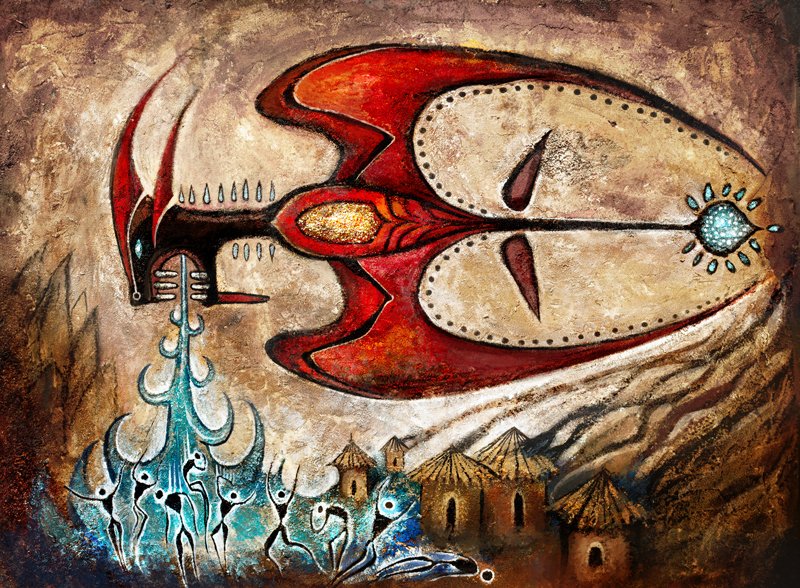
This week is all about Ikoria, Lair of Behemoths, and today all about red. You can find white here, blue here, and black here.
This is set with Godzilla, Mothra, Jaws, a sharknado, and of course, turtle power…
Yidaro, Wandering Monster
Yidaro, Wandering Monster is an overstatted fatty that can hit hard out of nowhere, and can be cycled away when not needed (potentially even leading to a free play later).
Strengths: While Constructed demands a lot out of seven-drops, Yidaro delivers. An 8/8 creature with trample and haste is actually enormous, and better than we normally see. Cycling is a great option for a late-game victory condition, and Yidaro gives us extra implied value by building towards that fourth activation.
At that point, we are “up a card” and we save seven mana by Yidaro getting cast for free. Additionally, any further cycling of Yidaro gets the full benefit each time, as it is four or more, not every fourth. Note: Yidaro may have haste, but we can also cycle it mid-combat or on our opponent’s end step in situations where it might be especially advantageous.
Weaknesses: Seven-drops really do cost a lot, and the nature of the card makes us want to play four copies. While it does have cycling, the first three times we cycle it, we’re not actually making a profit in general.
Opportunity: Yidaro can be used “fairly,” as a victory condition for control or ramp, or “unfairly,” as part of some unusual combos.
Here’s an example of a more straightforward use:
Creatures (12)
Lands (22)
Spells (26)

Cantrips (such as Opt, Serum Visions, Remand, and cards you intend to cycle) tend to have diminishing returns. You only have so much mana, and the more of them you play with, the more you draw into them.
Normally, this can result in some tempo problems and needs to be accounted for in deck construction; however, Yidaro gets better the more you cycle it, and all these cantrips causing you to draw into Yidaro more often actually make the card stronger.
Threats: Yidaro can be slotted into such a wide array of decks, the threats are really more a function of whatever strategy you put it in, rather than Yidaro, itself. That said, hard black removal is much stronger against it than most other kinds. It’s hard for red to ever assemble enough burn. White is generally reliant on sorcery-speed kill right now. Blue relies heavily on permission and Yidaro’s ability puts it onto the battlefield in a largely uncounterable way.
Yidaro’s combo applications stem from two areas:
- Cycling synergizes with other cards in Ikoria to make more than the sum of the parts.
- It’s one of the most powerful creatures you can put on the battlefield at any cost for Standard, while having a lower opportunity cost because of cycling. This makes it an ideal candidate to try to cheat the cost of.
In building to this first path, one such possibility is when used in conjunction with Unpredictable Cyclone.
Unpredictable Cyclone
Unpredictable Cyclone is the latest in a long line of expensive red enchantments that “make things crazy.”
Strengths: Unpredictable Cyclone can potentially give us a mana advantage by replacing our draws from cycling with casting spells. If we get a spell that costs more than the cycling cost we paid, we make a profit.
Weaknesses: The naive use is very random, since we’re getting a random spell from our deck of the same type, making it harder to play for. Additionally, the card costs five, so we’ve got to make a lot of profit to pay for our initial investment.
Opportunity: If we construct our deck carefully, we can ensure some amount of power, some amount of reliability in advantage generated by cycling with the cyclone on the battlefield. Some might even say we could make it more predictable.
If we play Boon of the Wish-Giver without any cheaper sorceries, we can cycle it and know we’ll hit another Boon…
…unless of course we were to play even more powerful sorceries.
You don’t have to cast many one-mana instant-speed Inspired Ultimatums to make the operation profitable, I’ll tell you that much.
Creatures (5)
Planeswalkers (4)
Lands (24)
Spells (27)

Similar to the Boon/Ultimatum setup, playing only Yidaro and Dream Trawler ensures we’re getting something extremely good for our two mana.
If we want even more predictability, we could remove the Dream Trawler, but given Yidaro being a legend, it’s kind of nice to have an extra option; in fact, I wouldn’t be surprised if we might want another big creature or two here (whether more Dream Trawlers or a variety, perhaps including Agent of Treachery).
It might be that we’re just too slow to get away with relying on Flame Sweep for our sweeper, but I wanted to see if we could avoid playing Deafening Clarion or Shatter the Sky maindeck in order to guarantee a huge card drawer from cycling Boon. It’s probably just necessary to move some of those maindeck, but we’ll learn more from trying it the purer way first.
Threats: This approach spends a fair bit of time doing nothing and could just get run over. We’re also not the longest on interaction, so somebody with a more reliable combo (like just casting Gyruda on Turn 6) could make our life difficult.
We don’t need to focus on cycling to get the Turtle onto the battlefield earlier, though. For instance, if our playset of Turtles are the only creatures in our deck, Lukka, Coppercoat Outcast can really cheat the system.
Lukka, Coppercoat Outcast
Lukka is an interesting puzzle. His -2 ability makes him kind of a five-cost Polymorph, but his +1 is kind of 60% of Garruk, Caller of Beasts’s +1 ability (albeit in a form that can be toppled if somebody kills Lukka). That could be a lot of card draw in a creature-heavy deck.
The most natural way to exploit Polymorph is to play with only incredible fatties, and then token-making. That way, when you target your token, you’ll always reveal the fatty. There’s enough token-making in Standard that we could potentially do it that way; however, if we do, that’ll make Lukka’s +1 ability very weak. What’s more, paying five for a Polymorph that reveals Yidaro (instead of something like Emrakul, or whatever) sounds a little suspect.
What if we could have our cake and eat it too?
Lukka has another small difference compared to Polymorph, and that’s the whole “hit something with a higher cost” clause. That means we can actually play as many creatures as we want, as long as they all have the same cost (and in fact, we can also play creatures that are cheaper; they just won’t be ideal for targeting with Lukka’s ability).
This approach does make tokens no longer reliably work, so you kind of need to pick a lane and go for it, but getting to make Lukka’s +1 ability into a powerful card draw engine might be a big reward for our troubles.
Creatures (32)
- 4 Runaway Steam-Kin
- 4 Rix Maadi Reveler
- 4 Robber of the Rich
- 4 Fervent Champion
- 4 Rimrock Knight
- 4 Careless Celebrant
- 4 Drannith Stinger
- 4 Yidaro, Wandering Monster
Planeswalkers (4)
Lands (24)

I tried to prioritize two-drops that would still be impactful if we were ever in a spot of needing to +1 Lukka, but Careless Celebrant isn’t exactly the most on-message here. It’s very easy to imagine there being no need to go this extreme, and if we want to replace four to eight of the creatures with some combination of Shocks and Fire Prophecies, that sounds reasonable to me.
Fire Prophecy
This card looks pretty good to me. Companions really ensure you’re very likely to have a target, and if you do, it’s like you’re playing a Thrill of Possibility that always gives you a zero-mana deal-three as one of the two cards (assuming you don’t need the card you’re giving up to actually be discarded).
Fire Prophecy not being able to be used proactively makes it a little harder to use in fast aggro, but it should find lots of homes in spell-based decks trying to buy themselves time while they set up. For instance, it makes a natural inclusion in Temur Reclamation over Scorching Dragonfire:
Creatures (4)
Lands (29)
Spells (27)

That said, it’s not out of the question to consider it for red aggro, particularly if the format breaks a little away from the curve dominance of Jeskai Fires decks.
Returning to the earlier list, one two-drop that might stand out is Drannith Stinger, given our relatively low quantity of cyclers.
Drannith Stinger
In that list, it increases our count of creatures that Lukka hits and can hit, while not glutting our hand with two-drops as much. Its primary use, of course, is in a dedicated cycling deck.
This could be in something more aggressive, perhaps alongside Reptilian Reflection, like the Boros Cycling list from Monday, or it could just be part of some hardcore Zenith Flare deck looking to burn people out.
Creatures (6)
Planeswalkers (4)
Lands (24)
Spells (26)
- 1 Absorb
- 1 Ionize
- 3 Deafening Clarion
- 2 Bag of Holding
- 3 Shatter the Sky
- 4 Boon of the Wish-Giver
- 4 Neutralize
- 4 Shark Typhoon
- 4 Zenith Flare
Sideboard

The red cycling cards in this set are a deceptively rich bunch to sort through, with nuanced reasons for each existing, without them being so smoothly interlocked that you just play all of them, nor being so clearly slanted as to make there just be a “right answer” for everybody.
Getting a fight effect for two is a pretty valuable situational effect for a one-cost cycler. There’s enough other options that we probably need to be actually fighting some of the time to make it worth it, but it wouldn’t take much.
Maybe I’m crazy, but this card actually looks kind of good to me. How many threes, fours, or fives do you need to give trample and haste to before you’ve gotten your money’s worth? This could be a powerful tool against sorcery-speed sweepers, planeswalkers, and tokens that try to chump block, and we’re talking about a card with cycling 1, remember. That’s just not that high an opportunity cost.
Cycling 2 is so much more than cycling 1, so I think you’re really going to have to value Lava Serpent’s body. That said, it seems like a logical inclusion to try in Modern Living End, where it’s not only on-plan but probably better than some existing options that see play.
Shredded Sails is a weird one to process. Cycling cards are already kind of this conceit where you get a situational effect or you can cash it in for the slot machine (another option at random). Shredded Sails having two very disparate effects kind of just feels like something different from Wilt (which is admittedly kind of weird to live alongside Shredded Sails anyway, now that you mention it).
But whatever, all the minor aesthetic thoughts aside, Shredded Sails takes a couple of narrow but useful effects and puts them together in a pretty good package. Deal four isn’t quite “kill target flyer,” but it does more than cards I’ve paid three for, plus it cycles.
Weaponize the Monsters costs enough to use that it’s hard to play very many, but it might be a worthwhile sacrifice outlet to try in Obosh Rakdos Sacrifice decks that don’t have access to Priest of Forgotten Gods.
Flame Spill
For Flame Spill to ever be better than Slaying Fire, you must be hitting creatures with three or less toughness often enough that you’re making up for the loss of the ability to just directly target the opponent or a planeswalker. On top of that, it’s not like Slaying Fire is even a staple right now.
I guess you could try putting it into the sideboard of a red aggro deck, like the following:
Creatures (31)
- 4 Runaway Steam-Kin
- 4 Tin Street Dodger
- 4 Scorch Spitter
- 4 Robber of the Rich
- 4 Fervent Champion
- 4 Bonecrusher Giant
- 1 Rimrock Knight
- 4 Anax, Hardened in the Forge
- 2 Everquill Phoenix
Lands (21)
Spells (8)

My issue here is that I just don’t think it’s high-impact enough to warrant the slot. More interesting is Mythos of Vadrok.
Mythos of Vadrok looks like it should be a Jeskai card, but Jeskai decks have such unreal options for four mana. Still, we’ll be seeing more of it when we hit the Jeskai cards.
While I don’t think this card is all that strong, it can be quite effective in creature battles when you’re expecting to face a mix of small creatures. Amusingly, it might actually be in green decks, where the white and blue ability shows up. A Gruul deck with Gilded Goose and Paradise Druid might be interested in its ability to fight several small creatures or one big one (including the possibility of killing a planeswalker). Having the ability to backdoor the “kicker” lets us turn this into a potent (if narrow) way to force through a winning attack, or hold off one that would defeat us.
Everquill Phoenix is a card we’ll be returning to for use alongside some of the gold cards, but it’s also just fine here as a 4/4 flyer with upside, not entirely dissimilar to Thunderbreak Regent. It even combos with the Flame-Kin’s +1/+1 counters, and Robber of the Rich loves evasion.
Forbidden Friendship will see play as a token-maker, if only because of it being an upgrade over Dragon Fodder. It may not have as significant tribal implications, but Dragon Fodder has been used frequently without any, and it’s not like these are two tribes without synergies anyway.
One last card to touch on today. Blitz of the Thunder-Raptor might quietly be the red Hero’s Downfall.
Blitz of the Thunder-Raptor
Yeah, it’s not that good on Turn 2, but neither is Hero’s Downfall. Here’s an example of how to put this card to good use:
Creatures (15)
Lands (21)
Spells (24)

Just play with a bunch of cantrips and cheap burn, and you’ll quickly be able to ensure Blitz can take down whatever you need. It’s especially nice with cards like Cathartic Reunion that let you stock your graveyard more quickly than usual.
Okay, we’ve covered a lot of ground so far, but there’s still a lot of really impactful stuff to come. See you tomorrow, when the green in Godzilla really comes out.

